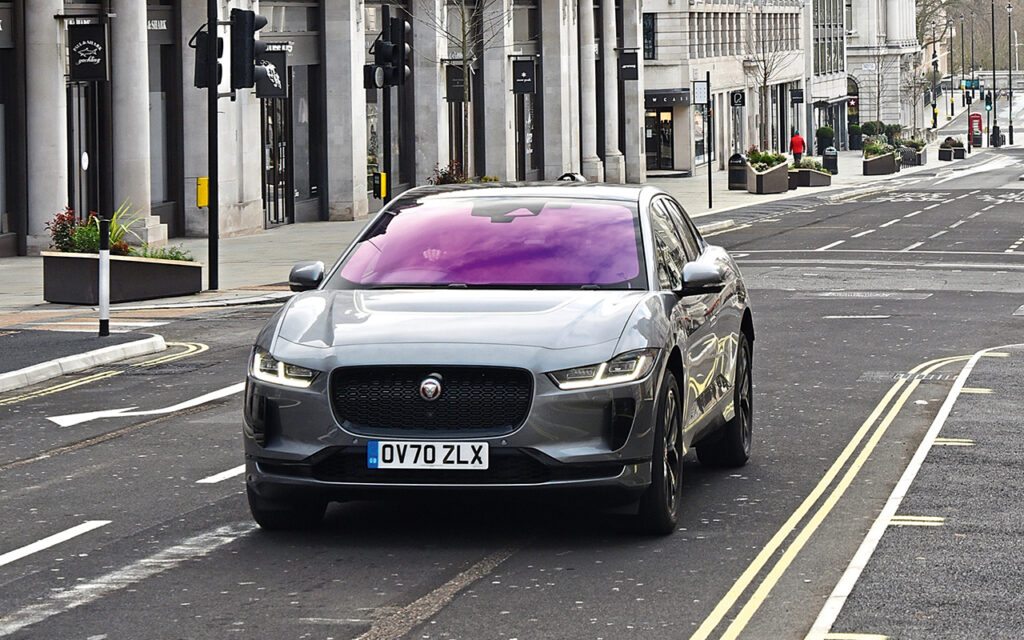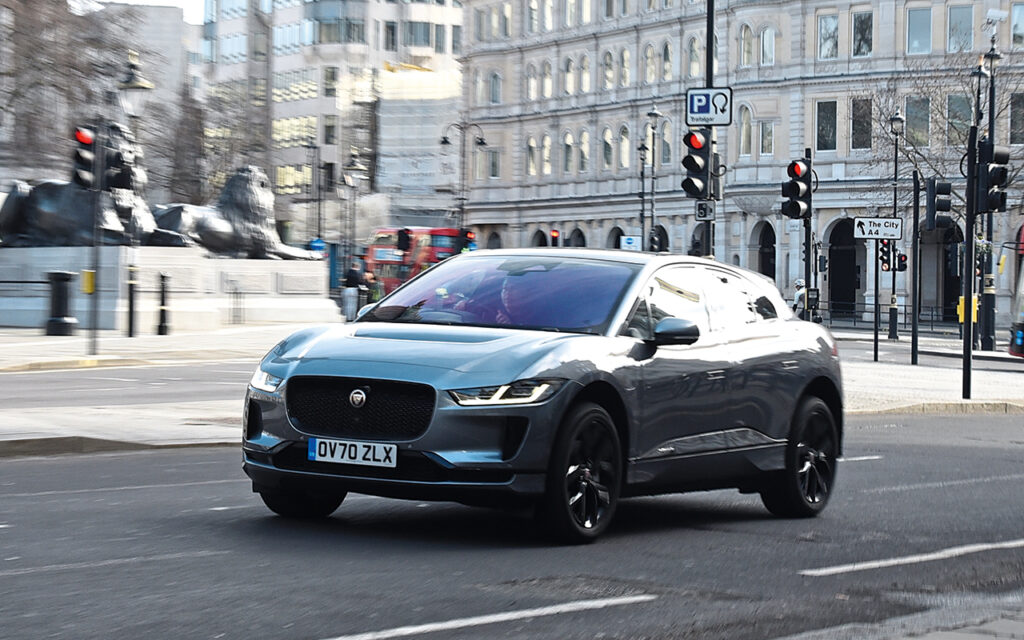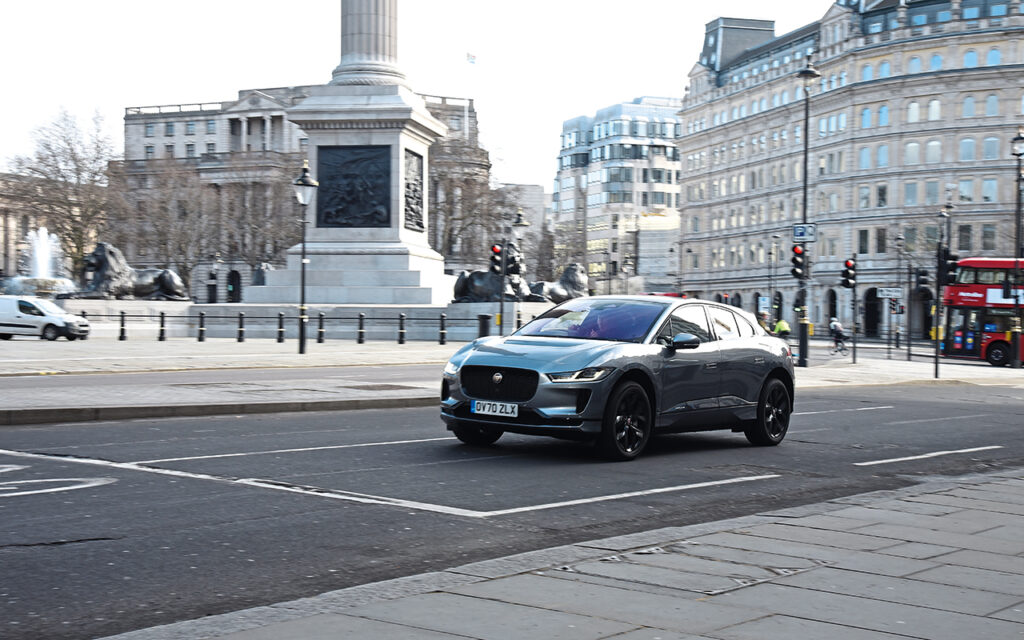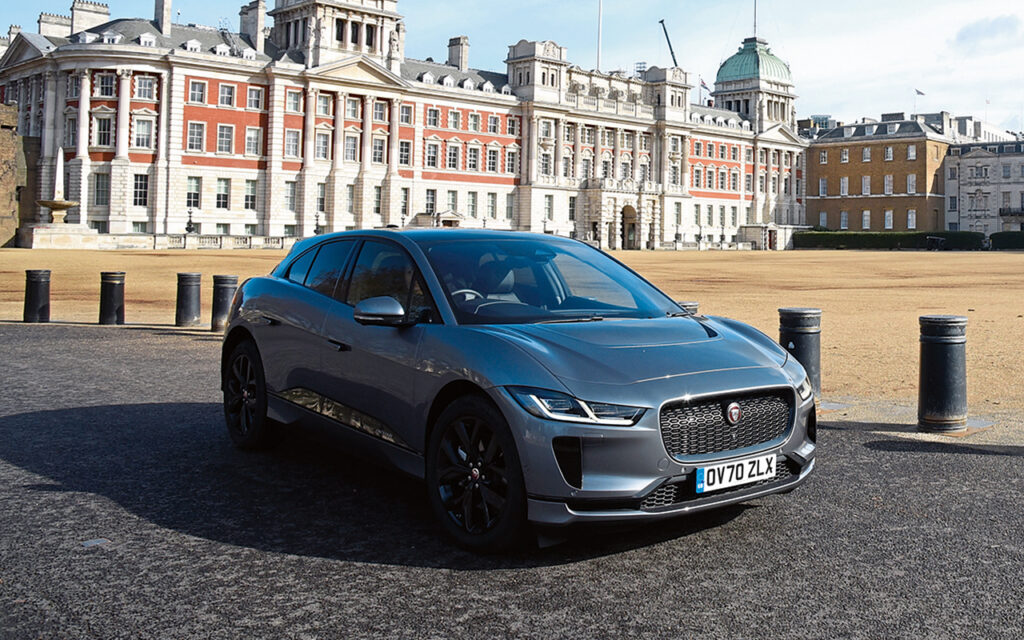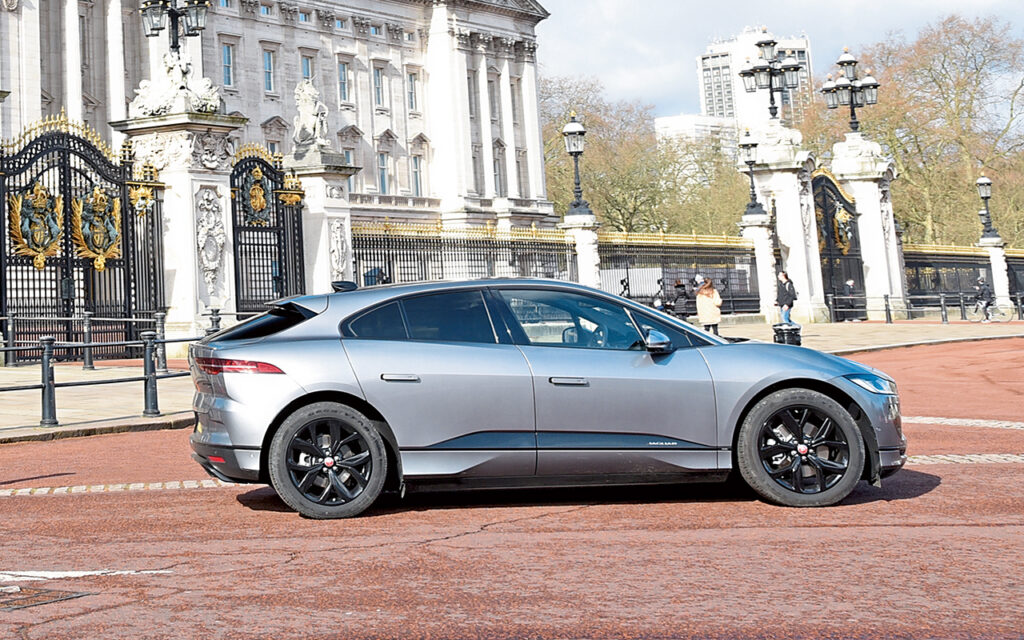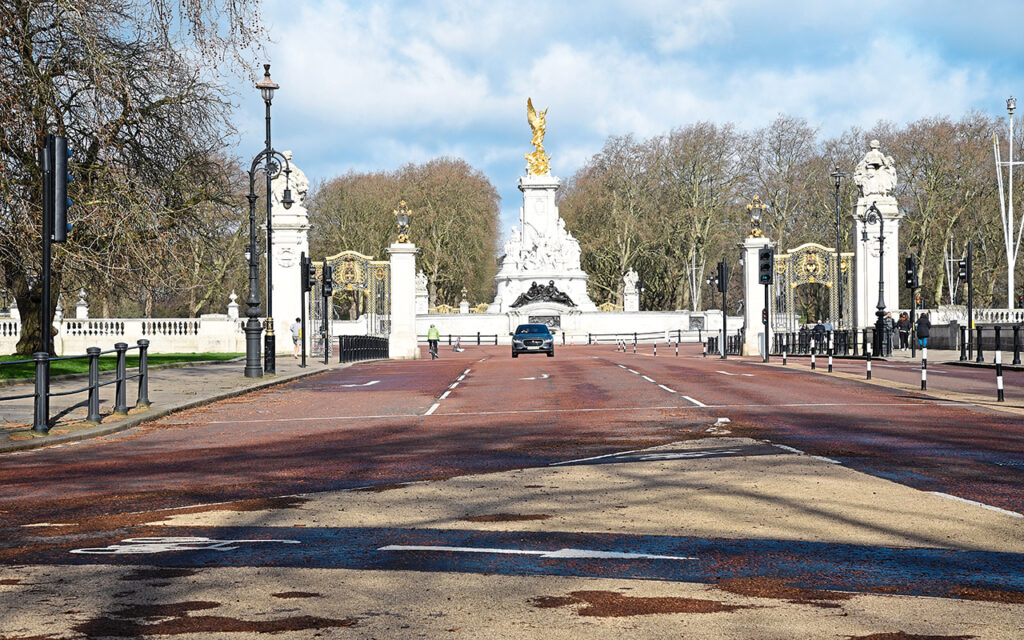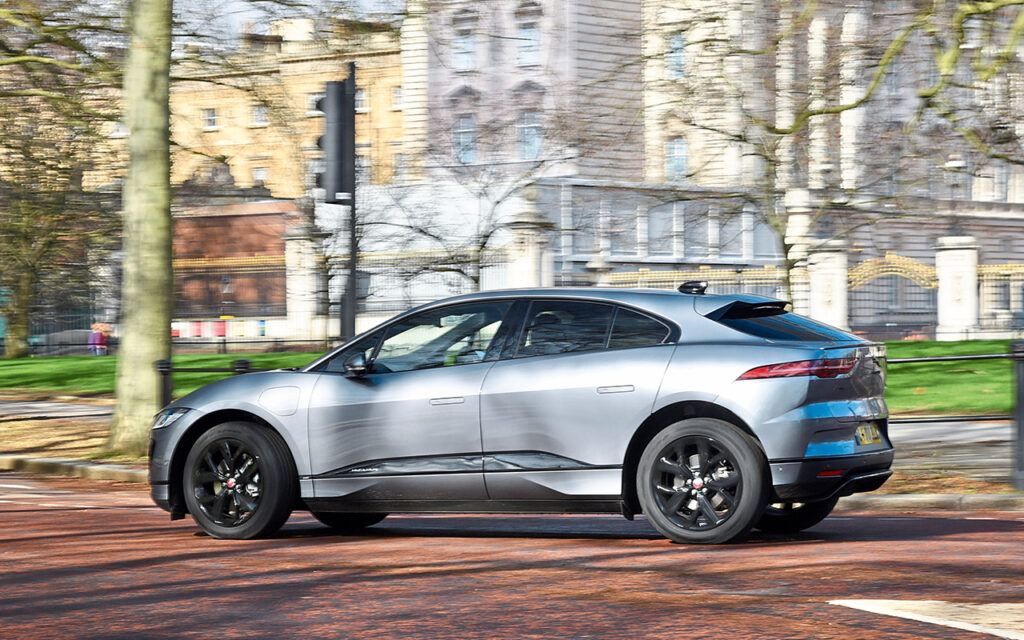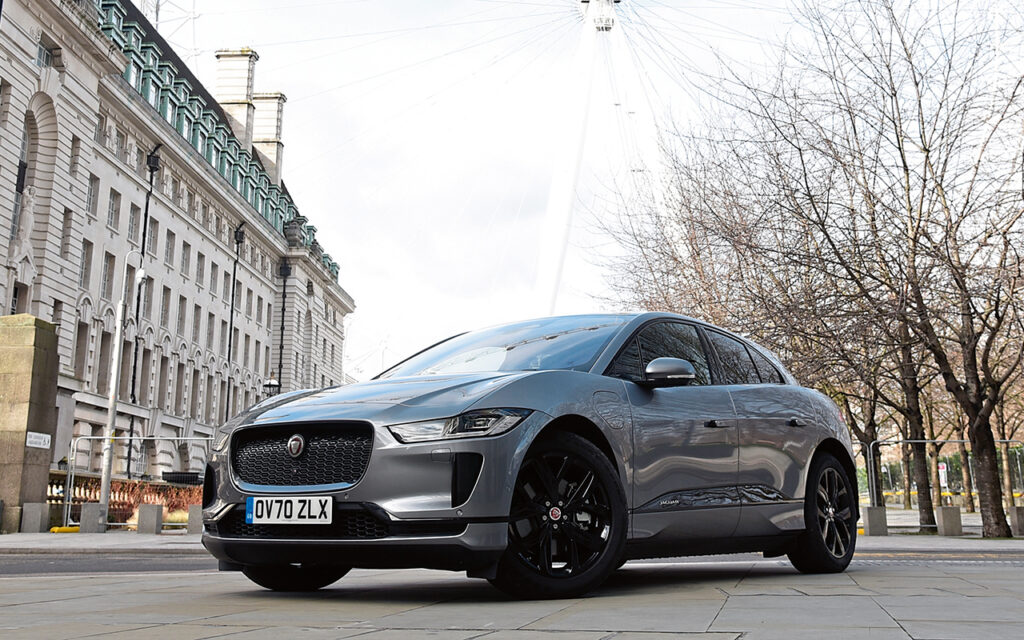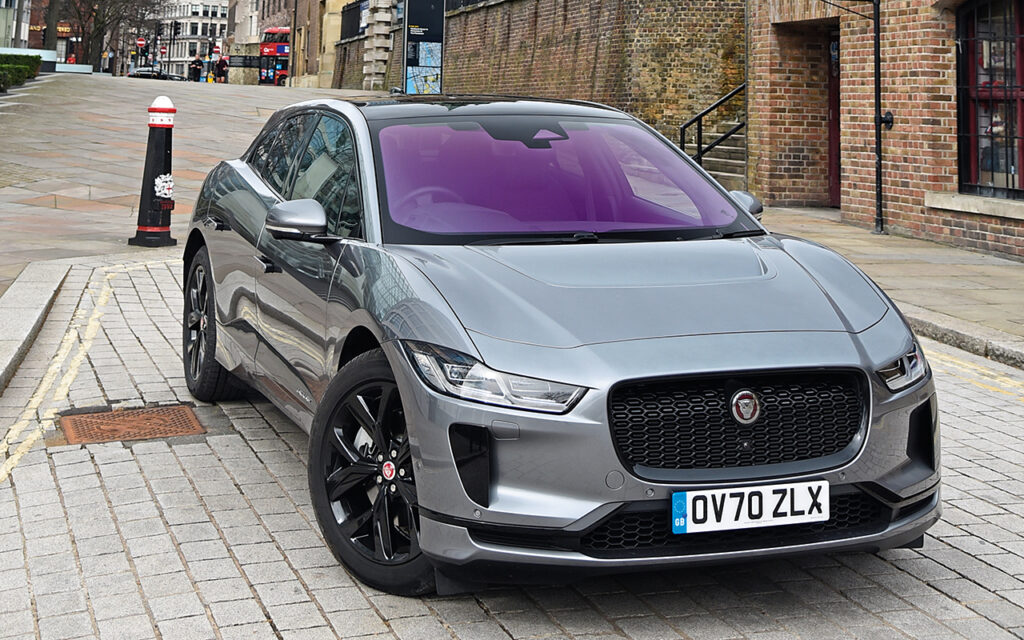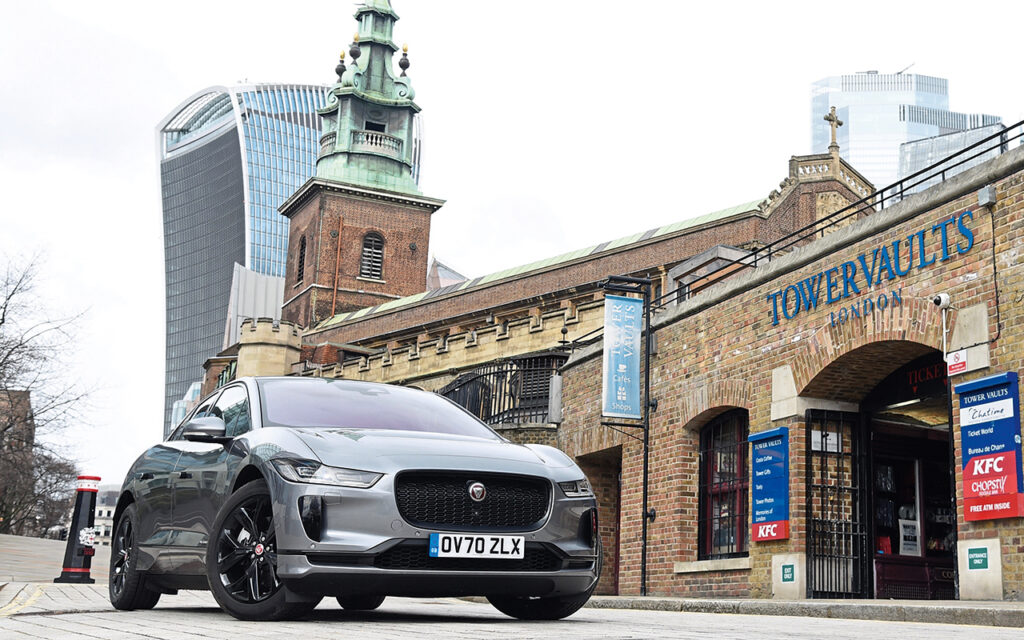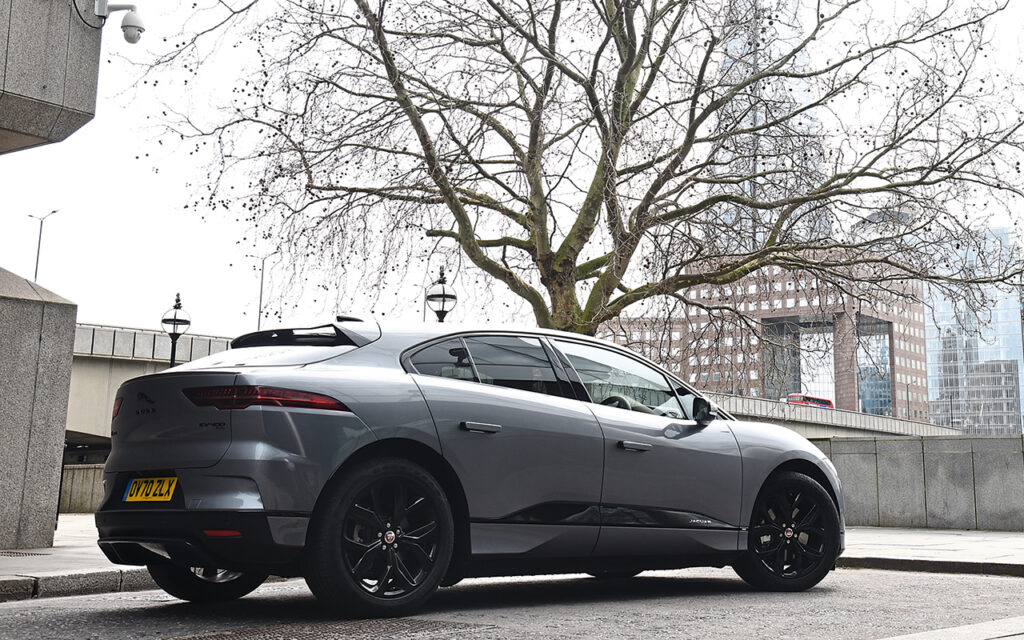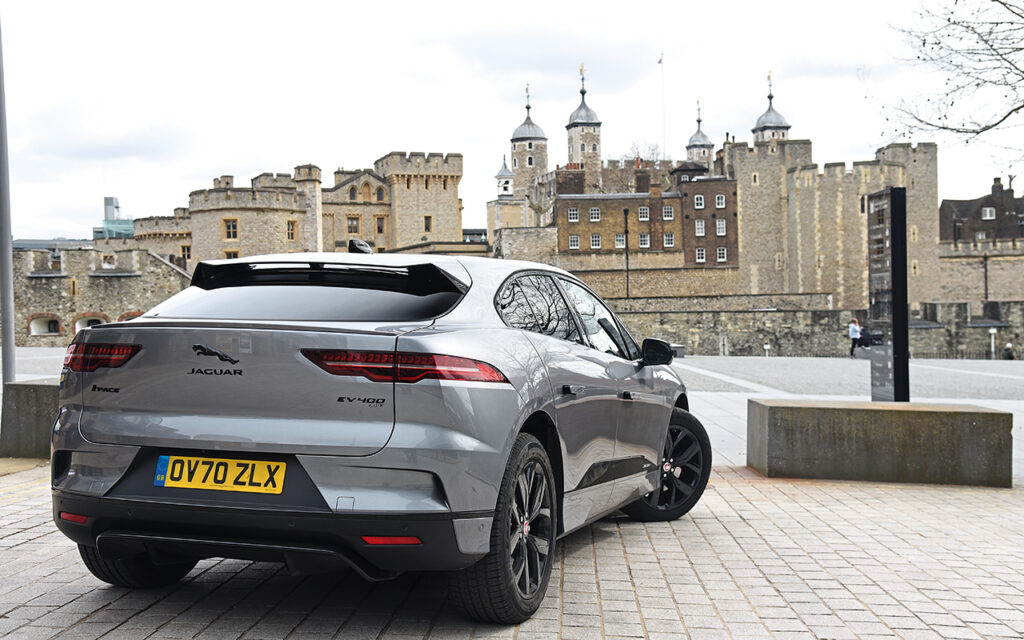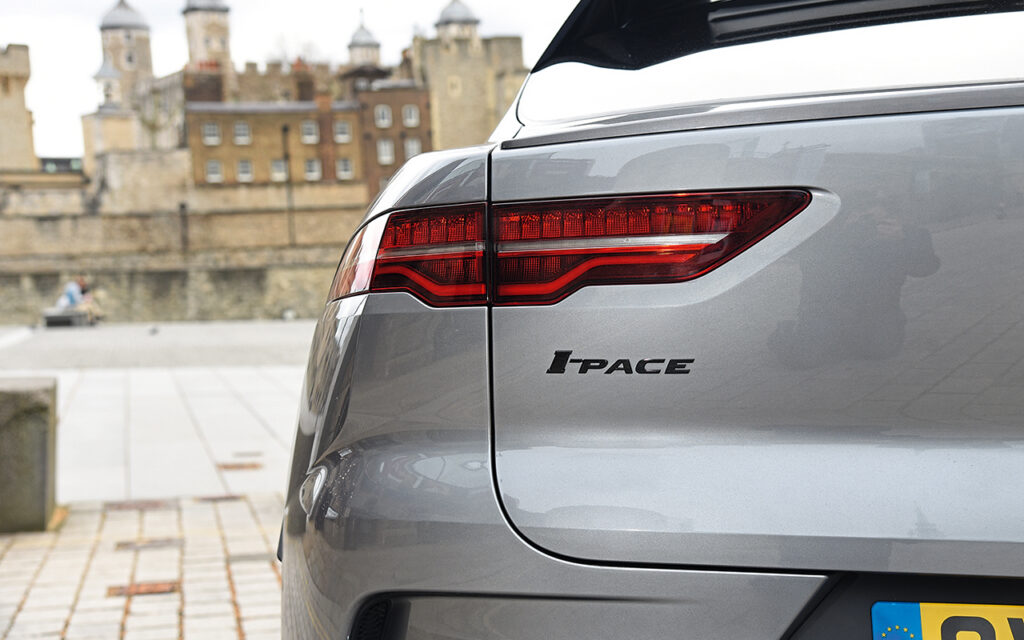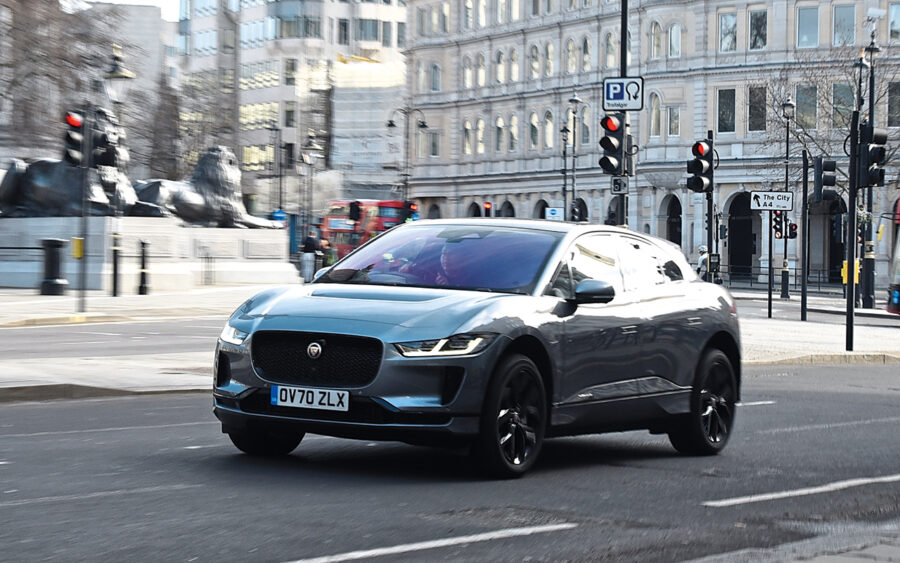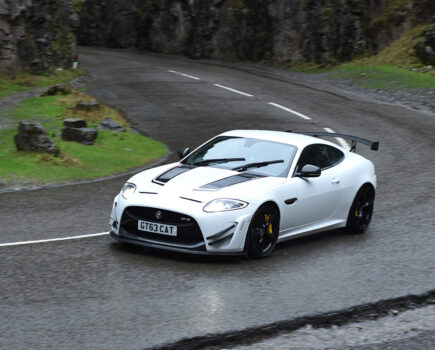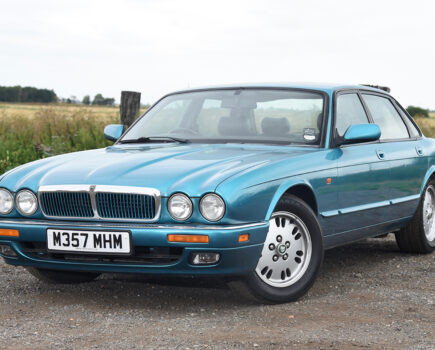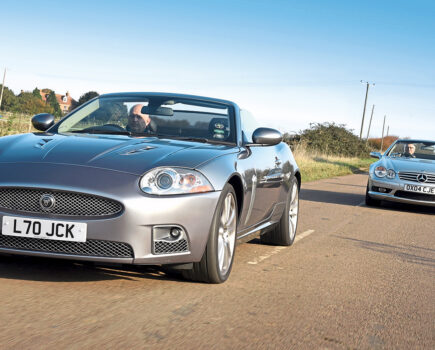We explore London in the facelifted I-Pace. With its increased range and faster charging times, is it the most efficient way to travel through the city?
Words: Paul Walton
The plan is simple. With the UK – and, therefore, London – still in lockdown, I’m going to enjoy a traffic-free tour of the capital’s main sights. But, I’m not taking a bus, I’ll be in something much more luxurious and cleaner: an I-Pace. Its range has recently been extended and its charging times shortened, so Jaguar’s first and, so far, only EV makes the perfect vehicle to travel around the UK’s largest city. Don’t believe me? A certain Charles Philip Arthur George, Prince of Wales and Earl of Chester, Duke of Cornwall, Duke of Rothesay, Earl of Carrick and Baron Renfrew, Lord of the Isles, and Prince and Great Steward of Scotland took delivery of one in 2018, using it for his royal duties in London. And, if it’s good enough for him, it’s good enough for Paul William Walton.
The trip starts at Piccadilly Circus. (Actually that’s not quite true; it starts at 6.30am at my home in Cambridgeshire and, this being a Sunday during lockdown, the A1 south is deserted – very different from the supermarket carpark experience when I used to commute to London.)
I last drove an I-Pace 18 months ago when I took the car on a ‘world tour’, visiting the UK’s New York, Washington and Moscow. The car impressed me by its refinement, speed and build quality, but at 190 miles (which soon reduced to more like 160) its range didn’t. Today, I have an 80-mile drive to central London and am initially worried I’d have to navigate via charging stations all day, as I did in 2019. Thankfully, a software update in late 2019, using information Jaguar garnered from the now-defunct I-Pace eTrophy Championship, has increased its range; when fully charged this car is saying it can cover 232 miles. Admittedly that’s still 60 less that what Jaguar reckons it can achieve but it’s an improvement. Together with faster charging times, part of the car’s 2020 facelift, the car is gradually becoming more practical, and more of a rival to a traditional internal combustion engine (ICE) car. So, following a 30-minute recharge at South Mimms services, I arrive in Central London with the batteries still three-quarters full and showing 180 miles left.
Piccadilly Circus is deserted. As an important junction in London’s West End, linking Piccadilly itself with Regent Street, it’s normally nose to tail with traffic and the pavements full of tourists trying to take selfies with Alfred Gilbert’s 19th century winged statue of Anteros. But not today. With nothing open due to the UK-wide lockdown, it’s just me and a few hungry-looking pigeons. It’s an eerie, apocalyptic scene, especially since Piccadilly’s huge, illuminated adverts still broadcast messages to a non-existent crowd. They don’t have an impact on me though… but is anyone else desperate for a Coke?
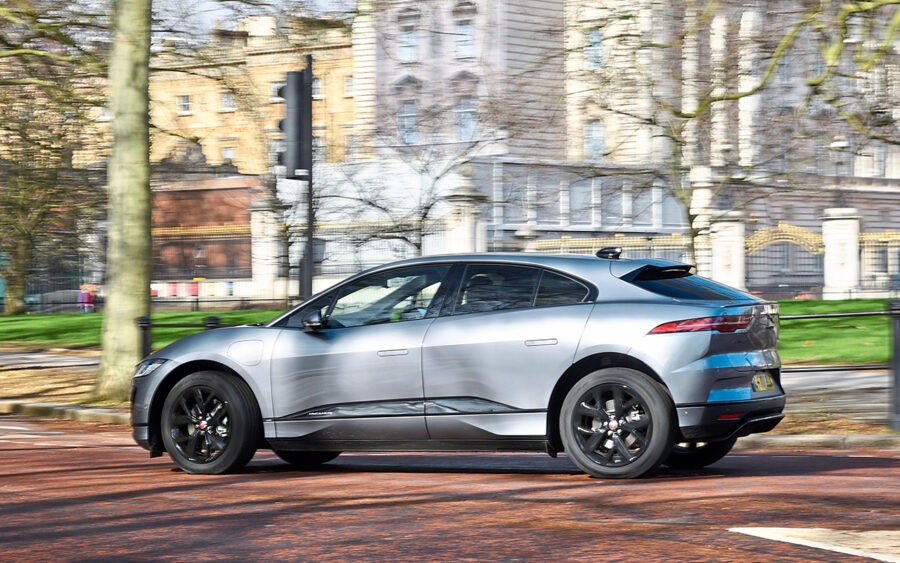
After passing through London’s theatre district, Shaftsbury Avenue, its own signs unlit, the street deserted, I take a right onto Haymarket and soon arrive at Trafalgar Square. Dominated by a 169ft 3in (51.59m) column topped with a statue of Lord Admiral Nelson, the square is one of London’s most popular tourist attractions, with 15m visitors annually. That’s in a normal year, of course. Today, it’s quieter than Harry and Meghan’s next family get together.
Yet it’s not as quiet as the I-Pace. I know many of you who own V8-engined Jaguars are disappointed by JLR’s announcement in February that it will become an electric-only brand by 2025, citing the lack of noise as your reason, but I love how peaceful the I-Pace is. With only a slight hum from the front and rear axle-mounted electric motors, the interior is almost silent, and the driving experience so refined I could be chauffeuring Hugh Bonneville. It’s how I imagine customers must have felt when they first drove the XJ6 Series 1 in 1968 – especially if they’d traded up from an Austin 1800 or Ford Cortina.
The I-Pace is also Jaguar’s best-built car of its current range. With the company also announcing that it is putting volume to one side to concentrate instead on the luxury market, the car gives the tiniest glimmer of what we can expect in the future.
Construction of the car is outsourced to a contract manufacturer, Magna Steyr, in Austria, and the materials used throughout the interior are of a far better quality than any other model, even the final-generation XJ, the X351. It’s brilliantly designed, too. While it features the modern digital dial pack and ventilation system that are currently de rigueur, the ventilation fan and temperature are still dialled in by large and easy-to-locate circular controls. There’s even a proper old-fashioned knob for the radio, which means I can use it without needing a London A-Z to find.
I take a left off Trafalgar, pass under Admiralty Arch and onto Pall Mall. Named after a ball game that was played in the area during the 17th century, it might be less than half-a-mile long, but this short stretch of road is one of London’s most famous pieces of real estate, due to a certain resident. In the distance, its cream Portland stone beautifully illuminated by the early morning sun, is Buckingham Palace. With the gleaming Victoria Memorial directly in front, the view couldn’t be more representative of London than if there were also Pearly Queens, a pickled eel and Ray Winstone in view.
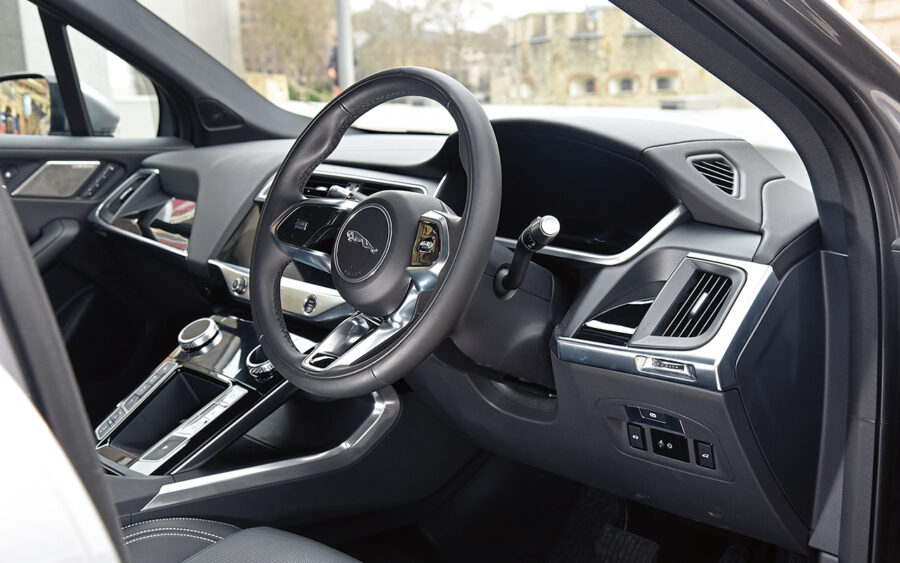
Admittedly, Charles’ I-Pace is in Loire Blue – a colour not usually available for the I-Pace – and the one I’m driving is Eiger Grey Metallic (a £735 option), but I still wave to the few confused pedestrians as I roll past as quietly and serenely as Her Majesty’s Bentley State Limousine.
After a drive by of the Palace, I return up the Mall, turn right past Horse Guards Parade (the traditional location for Trooping the Colour to mark the Sovereign’s birthday – I’m lucky if I get a card) and then left onto Parliament Square. Unfortunately, one of London’s most famous landmarks – the Elizabeth Tower – is still undergoing its four-year renovation and is hidden by a thick layer of scaffolding. Due to be finished this year, London isn’t London without its booming Big Ben bell telling the city the time.
As I pass the Houses of Parliament and cross over Westminster Bridge, the roads are becoming busier. Yet, despite the car’s width – at 1,895mm, the I-Pace is a mere 5mm narrower than the F-Pace – I weave in and out of the traffic with surprising ease, the acceleration from its twin permanent magnet synchronous electric motors displaying the same urgency as a scalded cat.
Because the car is marketed as an SUV (not that I can imagine one being taken off road, miles from a charging point) and this one has the optional active suspension fitted (£1,120), it handles the endless speed bumps and potholes effortlessly. So smooth is the ride, it’s understandable why the I-Pace is quite literally fit for a prince.
It’s also priced for one: at £69,795 for this mid-range SE, it’s expensive for what’s effectively a short-range commuter car. And while there are plenty of charging stations in the capital (marked on the sat-nav map) they’re rarer elsewhere – meaning long journeys, although possible, will still be fraught with the danger of running out of juice, as I discovered in 2019. Hopefully, with the UK banning the sale of new ICE cars by 2030, that should change quickly, but, right now, as someone who often covers a high number of miles, I have neither the time nor patience to find a charger and wait up to two hours for a full top up.
Turning left after Westminster Bridge, I pass the London Eye on the south bank of the River Thames, now closed due to Covid-19 restrictions. Having ridden it several times in happier years, it’s sad to see the 135m (443ft) wheel stationary. Let’s hope it starts spinning again soon.
My final destination – the Tower of London – is on the other side of town, and I need to use the sat-nav for the first time. The I-Pace’s 2020 refresh also introduced JLR’s new Pivi Pro infotainment system. Looking and feeling like a tablet, it’s intuitive and easier to use than the outgoing Incontrol Touch Pro, which is more confusing than my parents’ ancient DVD player. I quickly program in the postcode for Anne Boleyn’s execution site and the mapping immediately plots a course over London Bridge. One major issue with the new system is that it tries to take me down either one-way streets or those with width restrictions, leaving me needing to do more three-point turns than an irate London cabby.

After navigating through the increasingly busy streets, I eventually arrive at the Tower. Founded in 1066 as part of the Norman Conquest, it was once the largest building in the city, its stature used as a symbol of aggression by the country’s new ruler, William the Conqueror. It’s now dwarfed by 21st skyscrapers, including 20 Fenchurch Street (otherwise known as the Walkie Talkie building), making for an interesting juxtaposition between old and new.
And so does the I-Pace. It might look and drive like a traditional crossover, but underneath are state-of-the-art electric motor and battery technology. It’s also as fast as a sports car, yet with a smaller CO2 footprint than a jogger. If range and price aren’t important, I can thoroughly recommend buying one; it might be different from any other car we feature in this issue, but its speed, refinement and luxury make it just as much a Jaguar.
What excites me the most, though, is what the car represents. If Jaguar’s first attempt at an electric vehicle is this good, what does the future hold for a company that’s about to transcend into a new, EV-only direction? Whatever comes next, no doubt Charles Philip Arthur George, Prince of Wales and Earl of Chester, Duke of Cornwall, Duke of Rothesay, Earl of Carrick and Baron Renfrew, Lord of the Isles, and Prince and Great Steward of Scotland will be watching as closely as the rest of us.
